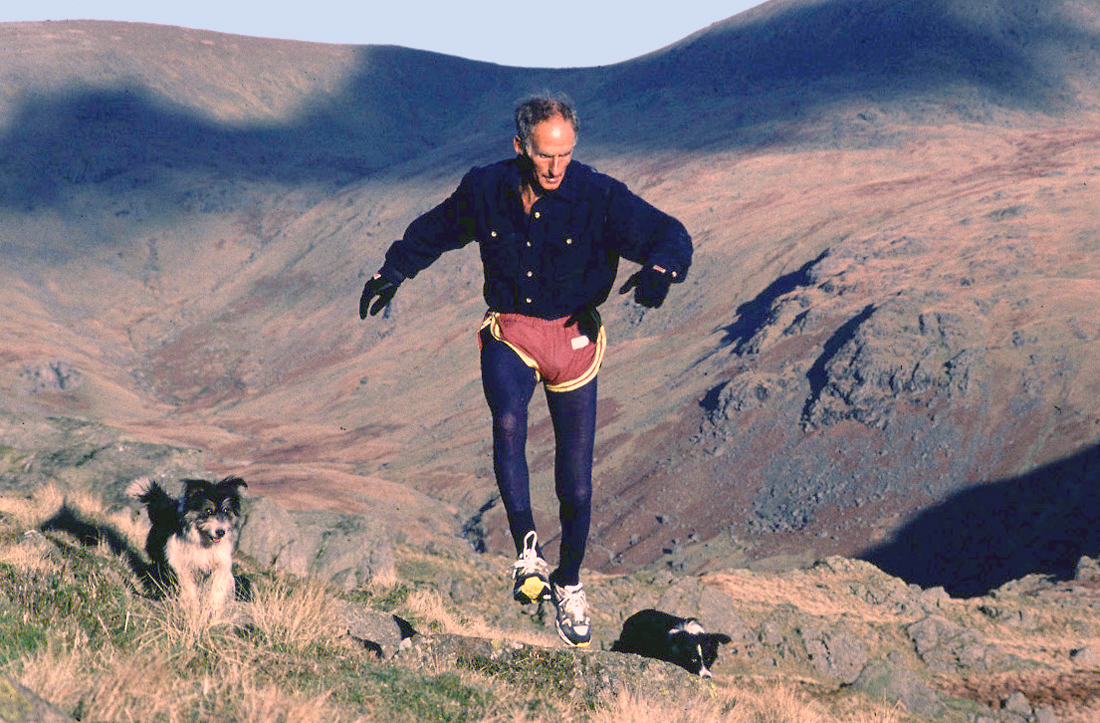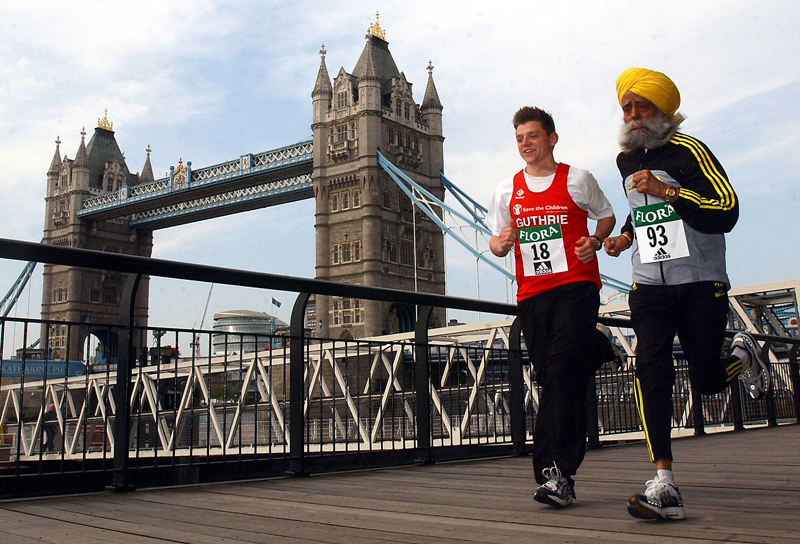Ageing and performance: all in your mind?

Just how important is your chronological age? How much decline in performance can you expect as the years tick by, and what (if anything) can you do to minimise these performance losses? Let’s start with a few home truths about age and physical performance the first of which is that as you age, you will experience a steady decline in your maximal exercise capacity. In addition, your capacity to recover rapidly from prolonged or hard bouts of training or competition will also decline. The reason for this decline is primarily due to a combination of reduced muscle mass and decreased cardio-respiratory (heart, lung and circulatory) function. We know this to be true because over the years, numerous studies have shown that(1-4):
- Your biological/physical peak is usually reached between ages 20-35;
- During early middle age, physical activity declines with a typical 5-10kg accumulation of body fat – a decline that continues into old age;
- Your maximum heart rate declines as you age and (partly because of this fact) your maximum oxygen uptake capacity also declines by about 1% per year (although this decline may be stemmed with regular training – see later). Your maximum oxygen uptake is crucial because ultimately, all your muscular energy is derived by combing muscle fuel (fat, carbohydrate) with oxygen – the faster you can transport and use oxygen in the muscles, the faster and longer you’ll be able to keep going!
- The mass of fast-twitch muscle fibres (needed to produce power during high-intensity exercise) is greatest during your 30s, where studies have shown a decline in power of 3% per annum with 1% per annum every year thereafter for both men and women. We know this because research shows that resistance training or activities requiring power (ie using predominantly fast-twitch muscle fibres) show a pattern of sharp decline after age 30, with the fastest loss of muscle power occurring during the fourth decade (31-40 years). After this point, a gradual but slower loss of power continues as we continue to age.
Slower recovery: real or perceived?
While peak performance does decline somewhat with increasing age, it’s the slower recovery after hard training sessions that many older athletes seem to notice first. This perception isn’t just anecdotal as some research seems to provide hard evidence for this phenomenon. In one study, 18 well-trained cyclists (nine ‘veterans’, average age 45yrs and nine ‘young’ cyclists, average age 24yrs) performed three consecutive days of high-intensity 30-minute cycling time trials intended to induce fatigue, leading to decreased performance(5). Each day, before, during, and after each time trial, the cyclists’ perceptions of muscle soreness, fatigue, and recovery were all recorded. The good news was that there was no change in time-trial performance over the three days for either group. The bad news was that muscle soreness and perceived recovery changed significantly (for the worse) over the three days in the veteran group, but not in the young group.New research
Now a brand new study provides further evidence for this effect – ie that while older athletes perceive their recovery from training is more difficult, actual performances following intense training and a recovery period are no worse than those of their younger counterparts [Exp Aging Res. 2018 May 29:1-12. doi: 10.1080/0361073X.2018.1477361].In this study, scientists compared physical performances, perceived recovery and actual markers of recovery in well-trained masters and young cyclists over a 48-hour period following a bout of repeated high-intensity interval exercise. Nine masters (average age 55.6 years) and eight young (average age = 25.9 years) cyclists performed a high-intensity interval exercise session consisting of 6 × 30-second intervals at 175% peak sustainable power output with 4.5 min rest between efforts. After 48 hours, the perceived and actual recovery in the two groups was then compared using sprint and time trial tests, along with blood tests and questionnaires.
Intriguing findings
What they discovered was as follows:- After 48 hours of recovery, both the groups struggled to sustain the same 10-second sprint power that they had managed before the high intensity intervals. However, the % drop in performance (indicating incomplete recovery) was the same in masters cyclists as in the younger cyclists – ie the actual recovery during the 48-hour period was no worse in the masters cyclists.
- The same pattern was observed following 30-minute time trial tests; proportionately, the masters cyclists performed no worse than their younger counterparts.
- Moreover, the changes in levels of a blood marker called ‘creatine kinase’ (a measure of muscle damage and breakdown) were the same in the two groups following the 48-hour recovery, indicating that the physiological recovery in the masters cyclists was not any slower than in the younger cyclists.
How should older endurance athletes train?
Although older athletes will experience a drop in maximal output, there’s plenty of good news here. Firstly, although you might feel as though your recovery is slower, the evidence to date suggests that your body is still recovering physiologically very much as it used to – and that means that you don’t necessarily need to take extended rest periods after hard training. Secondly, with the right training approach and the application of some simple scientific principles, there’s a fair chance that you could maintain most of your sporting performance, and perhaps even increase it! And that’s because the age-induced declines outlined above invariably relate to an individual’s theoretical ‘maximum exercise capacity’ rather than their current fitness level.What this means is that unless you’re already training at your absolute peak capacity and have already reached your maximum possible fitness level (unlikely), the chances are that with the right amount and types of training, you can steadily win back more fitness than time conspires to take away from you. Think of it this way; the size of the performance cake might be steadily declining as you age, but if you can take a bigger and bigger proportion of it each year, you could maintain your overall performance and possible even perform better than you did a few years ago.
In terms of strategies to maximise your capabilities as an older athlete, you need to consider the following:
- Optimising your endurance training - to minimise the decline in maximum aerobic capacity, and to be able to utilise more of your maximum capacity to maintain or even increase performance;
- Performing strength training - to combat and reverse the decline in muscle mass that occurs during ageing;
- Ensuring the right kind of nutrition - to support training, recovery and maintain strength.
Andrew Hamilton, Sports Performance Bulletin editor
References- Sports Medicine 2003; 33(12):877-888
- Sportsmed 1990; 18:73
- Appl Physiol 1987; 62:625
- American J. of Ortho 2002; 31(2):93-98
- J Sports Med Phys Fitness. 2008 Jun;48(2):272-7
You need to be logged in to continue reading.
Please register for limited access or take a 30-day risk-free trial of Sports Performance Bulletin to experience the full benefits of a subscription. TAKE A RISK-FREE TRIAL
TAKE A RISK-FREE TRIAL
Newsletter Sign Up
Testimonials
Dr. Alexandra Fandetti-Robin, Back & Body Chiropractic
Elspeth Cowell MSCh DpodM SRCh HCPC reg
William Hunter, Nuffield Health
Newsletter Sign Up
Coaches Testimonials
Dr. Alexandra Fandetti-Robin, Back & Body Chiropractic
Elspeth Cowell MSCh DpodM SRCh HCPC reg
William Hunter, Nuffield Health
Keep up with latest sports science research and apply it to maximize performance
Today you have the chance to join a group of athletes, and sports coaches/trainers who all have something special in common...
They use the latest research to improve performance for themselves and their clients - both athletes and sports teams - with help from global specialists in the fields of sports science, sports medicine and sports psychology.
They do this by reading Sports Performance Bulletin, an easy-to-digest but serious-minded journal dedicated to high performance sports. SPB offers a wealth of information and insight into the latest research, in an easily-accessible and understood format, along with a wealth of practical recommendations.
*includes 3 coaching manuals
Get Inspired
All the latest techniques and approaches
Sports Performance Bulletin helps dedicated endurance athletes improve their performance. Sense-checking the latest sports science research, and sourcing evidence and case studies to support findings, Sports Performance Bulletin turns proven insights into easily digestible practical advice. Supporting athletes, coaches and professionals who wish to ensure their guidance and programmes are kept right up to date and based on credible science.









